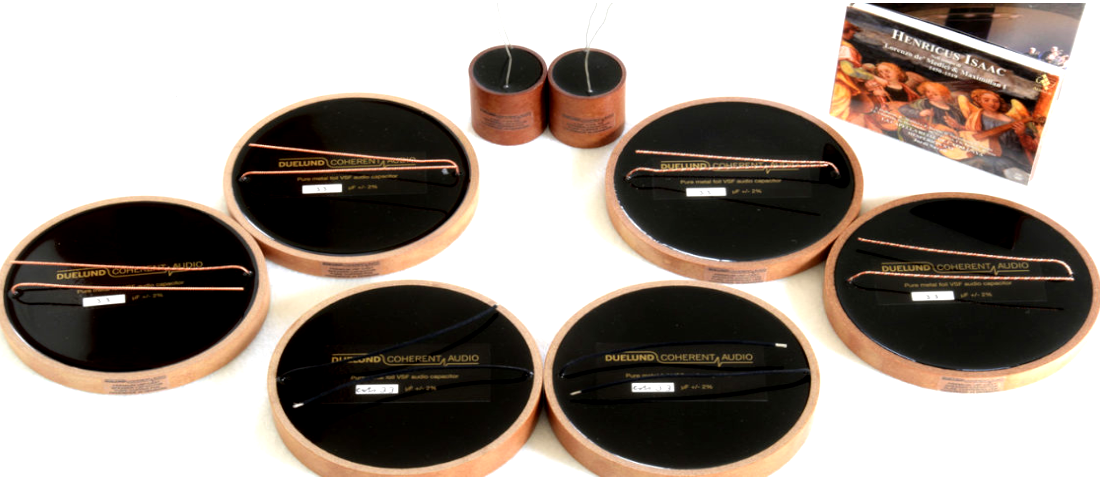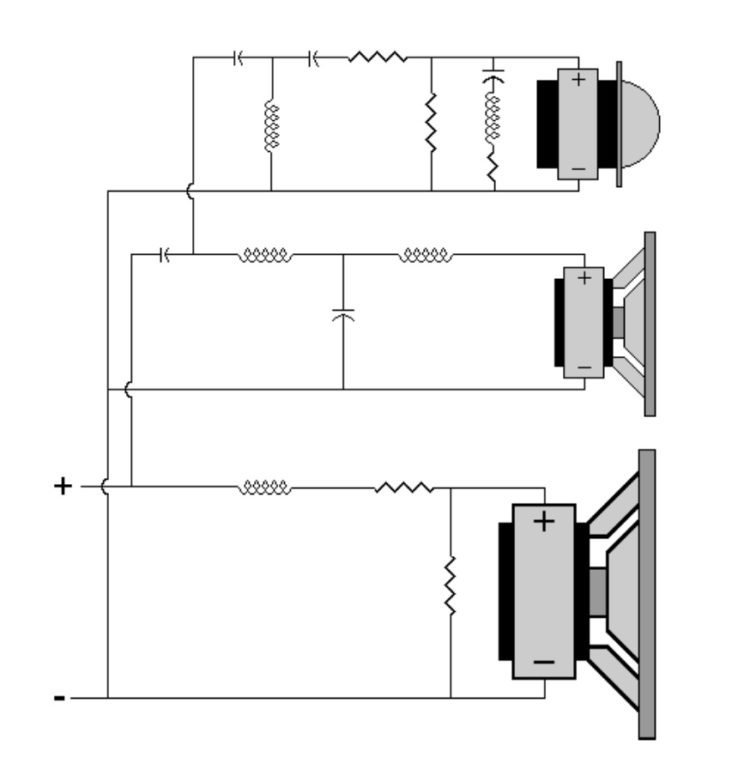
Choosing Capacitors for Crossover Audio Circuits
- Posted by doEEEt Media Group
- On November 23, 2020
- 0
Capacitors have a broad range of applications in audio circuits and systems. One of the main subsystems of a typical audio system is a crossover network. A crossover network is used to separate an audio signal into different frequency-dependent components. The separated components are then sent to specific driver circuits and speakers. The placement of this circuit can vary depending on the design of an audio system.
Capacitors are key components in virtually all types of crossover networks. Other passive components that are essential in these networks include resistors and inductors. For this article, we will primarily focus on the role of capacitors and the types that are commonly used in crossover networks. The article will also explore some of the key considerations when designing crossover circuits.
Why the components of an audio signal are separated
The audio frequency ranges between approximately 20 Hz and 20 kHz. Although this frequency range can be handled by a single driver, such a configuration does not yield optimum sound output. Using a single driver usually results in distorted and low-quality sound output.
Similarly, the low-quality sound output is obtained when a single speaker is used for the entire audio frequency. To prevent signal distortion in audio systems, most of today’s speakers are designed to operate optimally for a specific audio frequency range. This means that a combination of different speakers is required for optimum performance of an audio system.
For a full-range loudspeaker, the frequency range is usually characterized by unsatisfactory bass and treble. The frequency response for such a system usually has an irregular frequency response. Due to this poor performance of full-range speakers, they are rarely used in high-performance audio systems.
Using a single diaphragm for both bass and treble makes it difficult to lower distortion in an audio system. This characteristic makes full-range audio devices unsuitable for systems in which high-quality output is desired.
The design of a diaphragm has a significant effect on the quality of the sound produced by a loudspeaker. To start with, low frequencies are known to introduce harmonic distortion in the diaphragm. The low frequencies also cause inter-modulation between treble and bass.
The distortion caused by low frequencies can be reduced by decreasing diaphragm excursion. This requires the diaphragm area to be increased. High-frequency reproduction worsens with an increase in the size of a loudspeaker. To overcome these challenges, it is necessary to separate the components of an audio signal into different components and use audio devices that are optimized for limited audio frequency ranges.
Design considerations for crossover networks
Crossover networks are essential components in most of today’s audio systems. In a typical audio system, a crossover network is inserted after the amplifier. It separates and sends the high-frequency components to the tweeter, the bass audio signals to the woofer, and the mid-range components to the mid-range speakers.

Figure 1: A simplified circuit of a typical crossover network; image source: diyaudioandvideo.com
Filters, low pass and high pass, are the building blocks of crossover networks. These sub-circuits consist of capacitors, resistors and inductors in different configurations. These passive components are selected and configured depending on the frequency range of the audio component.
A low pass filter allows low frequency components of an audio signal to pass while blocking high frequency components. On the other hand, a high pass filter blocks both the low frequency and mid-range frequency components while allowing the high pass components to pass.
Although various passive components are used in a crossover network, the overall performance of a circuit is mainly determined by the capacitors used. In most crossover networks, inductors and resistors of fixed values are used. Furthermore, there is no need to replace these passive components (inductors and resistors) when upgrading a network. The only time replacement is needed is when a component is damaged.
Choosing capacitors for crossover networks
The types of capacitors that are commonly used for audio applications include ceramic, electrolytic and film capacitors. These types of capacitors differ in design, construction and performance characteristics. It is usually important to consider the unique needs of your audio application when selecting a capacitor.
Aluminium electrolytic capacitors come in a variety of designs but they are not widely used in audio applications. However, the characteristics of these components make them a suitable choice for some audio applications. When operated at a high voltage and high frequency, the temperature of an electrolytic capacitor can increase rapidly. As such, it is important to consider the temperature characteristics of a capacitor when selecting a capacitor for a crossover network.
Some electrolytic capacitors, for example non-polar electrolytic capacitors, produce distortions and are unsuitable for audio ac applications. Moreover, the high dissipation factor of these components can cause extreme heating in components. Overheating shortens the service life of a component and lowers the overall performance of a circuit.
For special miniature designs such as mobile phones, music players, hearing aids also tantalum/NbO capacitors can be considered, providing excellent audio performance with high stability and reliability. Nevertheless, these are polar devices that has to be considered in the design and thus not preferred in many applications.
Ceramic capacitors have a broad range of applications in today’s audio systems.
However, their performance characteristics make them unsuitable for use in crossover networks. To start with, these components are susceptible to microphonic effects. This occurs when a ceramic capacitor converts mechanical vibrations into electrical signals. These unwanted electrical signals can significantly distort audio signals.
The quality of sound produced by an audio circuit is greatly dependent on the audio frequency response of capacitors used. In general, ceramic capacitors have poor audio frequency response. Moreover, the low insulation resistance and relatively high equivalent series resistance of ceramic capacitors make them unsuitable for crossover networks.
Film capacitors are widely used in audio circuits for a wide range of applications. For the optimum performance of a crossover network, film capacitors with low dielectric absorption and equivalent series resistance are commonly used. The characteristics of film capacitors make them the number one choice for audio applications. It is common for circuit designers to use a combination of different types of capacitors.
featured image source: Duelund Capacitors
the article has been modified from its original content
Source: Capacitor Faks Blog
- Miniature RF Connectors for high-performance testing - April 24, 2025
- Space-Grade components available for immediate delivery - April 10, 2025
- Managing EEE components for LEO and lower cost space missions - December 17, 2024

0 comments on Choosing Capacitors for Crossover Audio Circuits